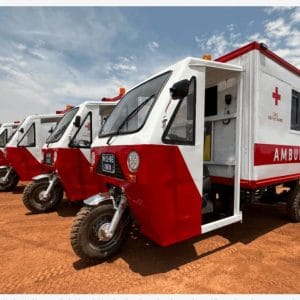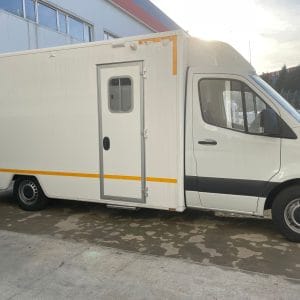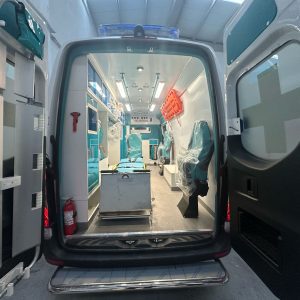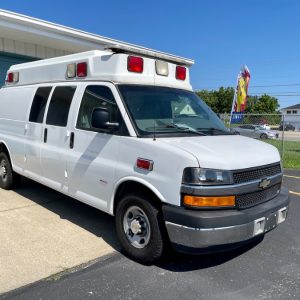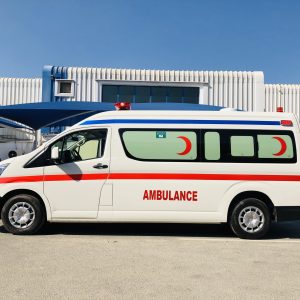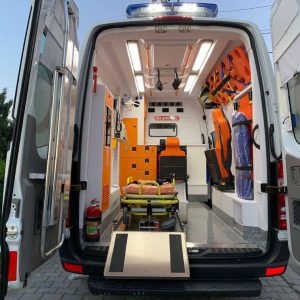1. Introduction to Mercedes-Benz Ambulances
Mercedes-Benz Ambulances; When it comes to emergency medical services, ambulances play a key role in ensuring that patients reach medical facilities in time. Therefore, all major automobile manufacturers are trying to tap into this market. Mercedes-Benz is one such major automobile manufacturer that offers a wide range of ambulances. The German automobile marque is marketing multiple vehicles for use in load departments, for the relay of patients, and for healthcare companies to utilize as mobile clinics.
In this guide, we take a look at the complete product line for Mercedes-Benz Ambulances. We take a look at both light and heavy-duty variants available in the company portfolio. When someone is sick, injured, or unable to walk, the first port of call is to call an ambulance. Therefore, it is important to have ambulances available for every emergency call placed. In this regard, automobile manufacturers are constantly innovating and developing vehicles for first responders. In this article, we look at Mercedes-Benz Ambulances.
2. Cost of Mercedes Ambulances
Mercedes dealers and partners handle the sale and other related processes of Mercedes ambulances. The price varies depending on the dealer’s location and the vehicle model. It can also be influenced by the selected extras and modifications, vehicle customization, as well as the customization and integration work of the vehicle outfitter. The price of a basic vehicle typically ranges from 25,000 euros for the little Sprinter – with box body or another body that isn’t directly recognizable as an ambulance – to about 65,000 euros for the large ambulance Sprinter, Metris and Vito ranges. Vehicles that have a paramedic interior tend to be more expensive. It can be seen from this that a hospital’s ambulance vehicle outfitting – often installed in the vehicles by third-party manufacturers – is relatively cost-intensive.
The special equipment available practically changes on a daily basis; almost everything is possible. Here are a few examples: the power supply systems (rechargeable batteries or ceiling lifters), various respiratory equipment (ventilators, oxygen supply systems or Sauerstoff-SmartReg), monitors (defibrillators, EKG systems or pulse oximetry) and ambulances (standard convoy vehicles or intensive care transport ambulances – standard and mobile intensive care ambulances). Additional options include heating, cooling and air-circulating units. The cost of a new custom-made Mercedes ambulance is variable. External, opportunistic and internal hospital-related factors can influence the costs. Custom-made vehicles are mandatory. Early on, a decision should be made about a budget framework for the different types of vehicles. In hospitals that foster entrepreneurial thinking and acting, a detailed Departmental budgeting for ambulances and vehicle outfitting is necessary. It is important to note that the German custom-built Mercedes ambulance is cost-effective. In terms of the patient number transported by Mercedes ambulances, cost recovery is 96%, with a capital commitment of €5.39 per patient visit. In the year 2015, the cost of treating a patient in the emergency department including the structure was €399.43.
3. Dimensions of Mercedes Ambulances
Mercedes Ambulance: Dimensions
3. Dimensions of Mercedes Ambulances
Dimensions matter when it comes to determining the overall size of an ambulance. Generally, the length of a Mercedes ambulance ranges from 5.9m to 5.7m, while the width and height of most ambulances are the same across different Mercedes models. Separately, the Sprinter Stretcher has a height of 10.7 feet, a width of 8 feet, and a length of 273-289 inches depending on the interior layout the buyer chooses.
These dimensions determine how a vehicle performs as it relates to maneuverability. A wider vehicle usually provides more interior space, which is great for patient care, while smaller and lighter vehicles are easier to accelerate and stop in times of emergencies. A taller ambulance offers more interior headroom and greater storage space overhead, while shorter ambulances can fit in tighter and lower spaces like garages and car parks. The length of an ambulance will also determine its turning radius and how soon it can fully brake in an emergency. The customizable nature of the interior of these vehicles makes the dimensions much more important. This is evident in ease of access and entrance and egress into the patient compartment. With the equipment likely to be carried in them, custom shelving systems, seating, and lighting most are designed with a taller and wider interior height in mind. The width of the Mercedes ambulance will determine how many workers can comfortably work inside the space.
4. Performance of Mercedes Ambulances
Performance of Mercedes-Benz Sprinter 318 Ambulance
At the heart of all Mercedes ambulances is the vehicle’s top-class six-cylinder engine. The powerful engine really comes into its own in its 258 hp output version. The 3.0-liter power plant delivers swift, quiet progress with a whole lot of torque to heighten driving pleasure, not to mention constant reserves of energy. With its wealth of engineering expertise, Mercedes pairs the wellspring of power with a modern seven-speed transmission – 7G-TRONIC – to send drive to the wheels of the Sprinter 318.
Top agility, particularly good handling, and maximum braking safety make every Mercedes ambulance a top athlete when it comes to delivering patients and emergency aid reliably in the briefest possible time – thus saving lives. All Mercedes-Benz ambulances in the current emergency vehicle portfolio come equipped with the modern “BRANDVAULT” lighting warning system. Rear and front are located on the flashing bar, which is brand-new on the road. Mercedes ambulances come without paintwork finish on all design elements above the vehicles’ side lines, contributing to the maximum level of privacy for patients onboard, safeguarding not only human dignity but also the privacy of patients and relatives.
The highlight of the interior with the new generation of wiring looms is a system based on keyless-go technology, which does away with the need to remove the ignition key to open the ambulance’s doors and storage boxes. It does indeed ensure highly efficient and quick access for all the life-saving equipment to be found on board. “Max payload” TZN-E 170 Oxygen tank holder for 2 cylinders Optimum handling and maximum braking safety are of utmost importance – as are the top agility and good roadholding preferential for swift, patient-friendly transport from the manifestation.
To safeguard efficient, safe relocations, all new-generation Mercedes ambulances come equipped standard with adaptive helpers such as ESP and ABS, as well as a tire-pressure monitoring system. Furthermore, the “Distance Keeper” active distance control system makes sure ambulances are an especially safe and comfort-oriented measure of meeting emergency situations out on the road. All aid equipment is stored in various draw-down equipment cabinets with elliptical aluminium profiles. While the spinal board slides forwards, it remains in line with the ambulance’s outer contours, assuring a high standard of accident protection. Other system components are split across hazardous goods compartments and/or lockable compartments. For battlefield emergencies, a fast-fitting special stretcher for casualty evacuation and a loading system are installed in a space set apart within the RAV BRETTINE® in the tail end. The Mercedes-Benz “Comfort Seat” is fitted as standard on the passenger side. As an ideal ergonomic aid to the driver, this instrument combines a wide range of adjustment possibilities that make it possible to choose exactly the right seat position for every ambulance driver involved in patient relocations.
5. Mercedes Sprinter Ambulance Specifications
Mercedes Sprinter Ambulances: Quick facts
In the types of vehicles that Miesen Ambulance-technik specializes in, the European ambulance landscape displays a mix of vehicle types, upper bodywork conversions on regular and cargo vans. The third most common type of van that Miesen Ambulance-technik has built ambulances on in 2017 is the Mercedes-Benz Sprinter. A vehicle with a preferred user group of the bright white, orange, and white services of the Duitse Red Cross and the Malteser. The panel van peaked in its popularity in the early 10s, at around 25% of the total number of patient transport vehicles, and slowly declined after to the 15-20% mark it still sits at today.
The Mercedes Sprinter ambulance
For typical ambulance use, the MB Sprinter and VW Crafter might be a bit on the large side. But it is a vehicle type with a decent amount of space, especially compared to the lower body specification to the right. To many who are used to North American ambulances, often built on a 3/4 or even 1-ton chassis, these ambulances are often called “big vans”. There are some physical limitations to this chassis though: the much longer runway compared to other panel vans, a matter which makes this style of van inpatient vehicle less maneuverable, and with vehicle lengths from 6.9 up to the 7.4-meter mark, often has a maximum payload of less than one metric ton (sometimes even less than 870 kilograms).



